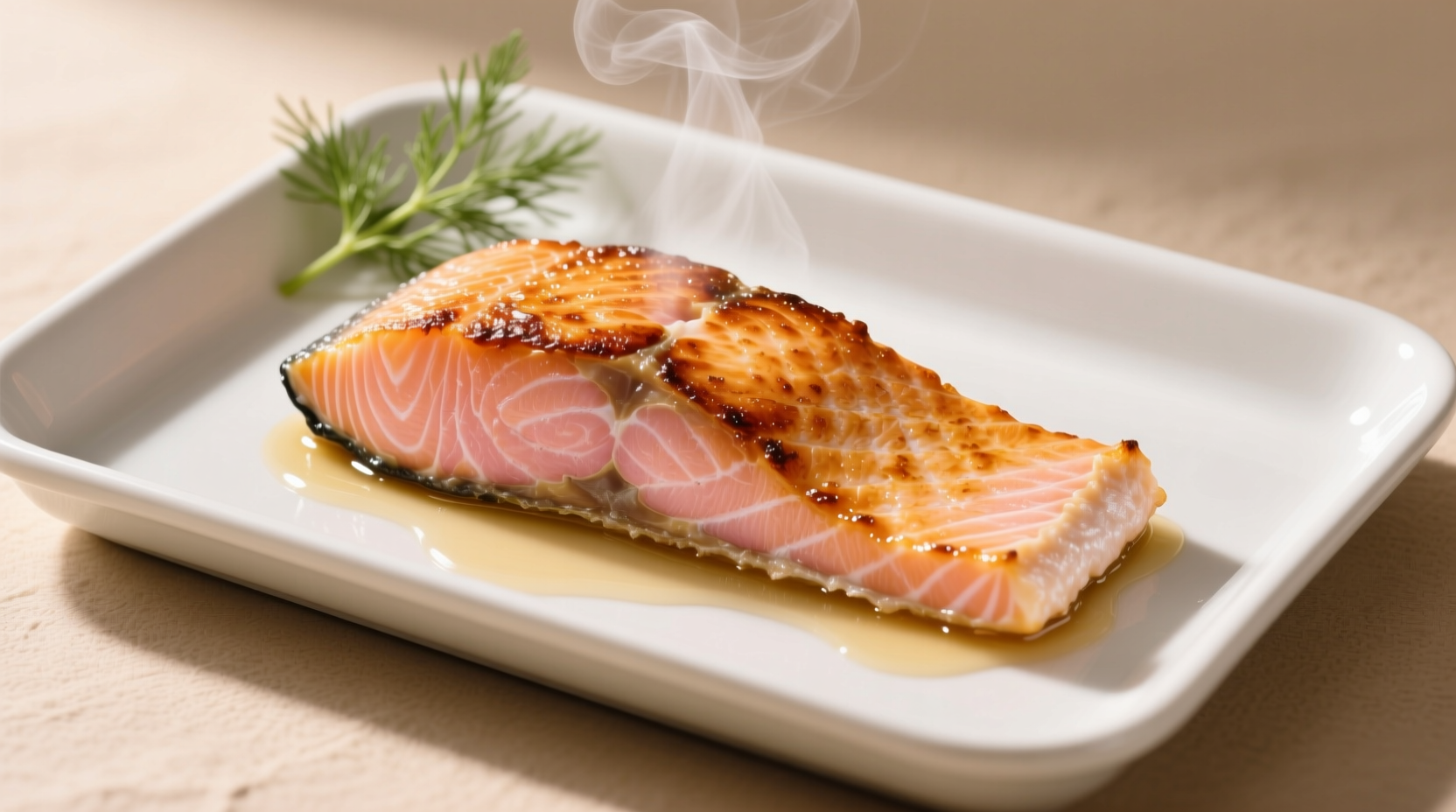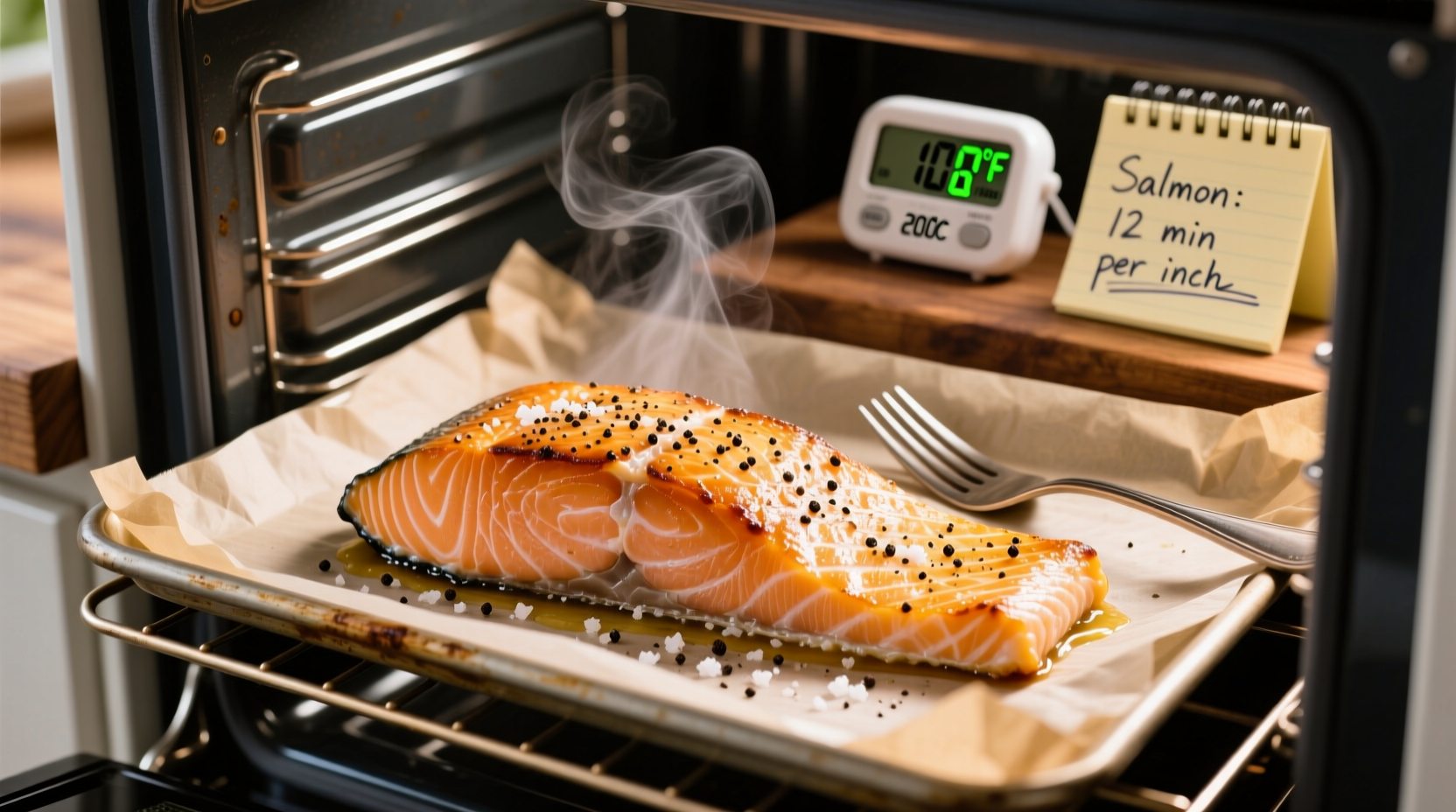Nothing beats the simplicity of oven-baked salmon for a healthy, protein-packed meal ready in under 20 minutes. But getting that flaky, moist texture without overcooking requires precise timing knowledge. This guide delivers exactly what you need to know to bake perfect salmon every time—no guesswork required.
The Science Behind Salmon Cooking Times
Understanding why salmon cooking times vary helps you adapt to different situations. Salmon is a delicate fish with low fat content compared to meats, making it prone to drying out when overcooked. The proteins in salmon begin to denature at just 110°F, firming up as temperature increases.
According to the USDA Food Safety and Inspection Service, fish is safe to eat at 145°F internal temperature, but many chefs prefer cooking salmon to lower temperatures for better texture. The American Heart Association recommends consuming fatty fish like salmon at least twice weekly for heart health benefits, making proper cooking technique essential.
Standard Oven-Baked Salmon Guidelines
While many variables affect cooking time, these baseline recommendations work for most home ovens:
| Salmon Thickness | 375°F (190°C) | 400°F (200°C) | 425°F (220°C) |
|---|---|---|---|
| 1 inch (2.5 cm) | 14-16 minutes | 12-14 minutes | 10-12 minutes |
| 1.5 inches (3.8 cm) | 18-20 minutes | 16-18 minutes | 14-16 minutes |
| 2 inches (5 cm) | 22-24 minutes | 20-22 minutes | 18-20 minutes |
These times assume your salmon starts at room temperature. Always measure thickness at the thickest part to determine cooking time accurately.
Step-by-Step Baking Instructions
Preparation Matters
Take your salmon out of the refrigerator 15-20 minutes before cooking. Cold fish straight from the fridge creates uneven cooking. Pat the surface completely dry with paper towels—this critical step ensures proper searing and prevents steaming.
Season simply with salt, pepper, and your choice of herbs. Popular combinations include:
- Lemon zest + dill + garlic powder
- Paprika + onion powder + dried thyme
- Soy sauce + honey + ginger (for Asian-inspired flavor)
Oven Setup and Positioning
Preheat your oven to your chosen temperature (400°F is ideal for most home cooks). Line a baking sheet with parchment paper or foil for easy cleanup. Place salmon skin-side down if skin is attached, or place presentation-side up if skinless.
For even cooking, position the baking sheet in the center of your oven. Avoid overcrowding—leave at least 1 inch between fillets if cooking multiple pieces.

How to Tell When Salmon Is Done
Timing provides a good estimate, but these indicators give definitive doneness confirmation:
Internal Temperature (Most Reliable Method)
Insert an instant-read thermometer into the thickest part of the salmon:
- 120-125°F (49-52°C) - Rare (very moist, deep orange center)
- 130-135°F (54-57°C) - Medium (optimal for most palates)
- 140-145°F (60-63°C) - Well done (firm texture, fully opaque)
Remember that salmon continues cooking after removal from oven (carryover cooking), so pull it out 5°F below your target temperature.
Visual and Texture Indicators
If you don't have a thermometer:
- Color change from translucent red to opaque pink
- Fish flakes easily with fork but remains moist
- Surface appears matte rather than shiny
Key Variables Affecting Cooking Time
Fresh vs. Frozen Salmon
Frozen salmon requires additional cooking time—approximately 25% longer than fresh. Always thaw frozen salmon in the refrigerator overnight for best results. Never cook frozen salmon without thawing, as this leads to uneven cooking and poor texture.
Skin-On vs. Skin-Off
Skin-on salmon typically cooks slightly faster as the skin helps conduct heat. The skin also protects the flesh from direct heat, reducing the risk of overcooking. For crispy skin, start skin-side down on a preheated baking sheet.
Oven Type Considerations
Convection ovens cook 25% faster than conventional ovens due to circulating hot air. When using convection, reduce temperature by 25°F or decrease cooking time by 15-20%. Gas ovens often have hot spots, so rotate the baking sheet halfway through cooking for even results.
Troubleshooting Common Problems
Overcooked Salmon
If your salmon is dry and tough:
- Reduce cooking time by 2-3 minutes next time
- Try a lower oven temperature (375°F)
- Consider brining thin fillets (15 minutes in 1/4 cup salt dissolved in 4 cups water)
Undercooked Salmon
If salmon remains translucent in the center:
- Return to oven and check every 2 minutes
- Ensure your oven is properly calibrated (use an oven thermometer)
- Consider thicker cuts if consistently undercooking thin fillets
Pro Tips for Perfect Oven-Baked Salmon
- Rest before serving: Let salmon rest 5 minutes after cooking—this allows juices to redistribute
- Oil matters: Use high smoke-point oils like avocado or grapeseed for better browning
- Acid finish: A squeeze of fresh lemon or lime juice brightens flavors
- Don't overcrowd: Cook in batches if necessary for proper air circulation
- Check early: Start checking 2-3 minutes before expected finish time
When Standard Guidelines Don't Apply
These cooking time recommendations work for most Atlantic salmon fillets, but specialty varieties require adjustments:
- Wild-caught salmon: Typically leaner than farmed, so reduce cooking time by 2-3 minutes
- Sockeye or Coho salmon: Thinner fillets cook faster—check 3-4 minutes earlier
- Whole side of salmon: Requires 35-45 minutes at 325°F—use thermometer for accuracy
High-altitude cooking (above 3,000 feet) also affects results—increase cooking time by 5-10% as moisture evaporates faster in low-pressure environments.











 浙公网安备
33010002000092号
浙公网安备
33010002000092号 浙B2-20120091-4
浙B2-20120091-4